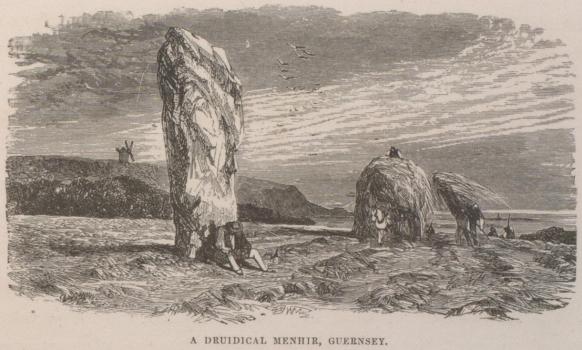Prehistoric remains in Guernsey, from the Lukis MSS
28th June 2016
In the early 20th century, local historian Edith Carey made copious notes from various manuscripts belonging to the Lukis family into scrapbooks which are now in the Library collection. She collected the following observations about early island archaeology together and copied them again into the notes she made to the book Guernsey Folk Lore, intended to aid her as its editor in a putative new edition, which she never completed. The Lukis family (Frederick Corbin Lukis and his children) were all deeply interested in archaeology, and these journal notes give a very Guernsey flavour of the beginnings of archaeology as a science. The photograph is of 'Frederick Lukis, Esq., at the Du Tus cromlech, Guernsey' from an album in the Library's Harvey collection (the Harvey and Lukis families were related.)





